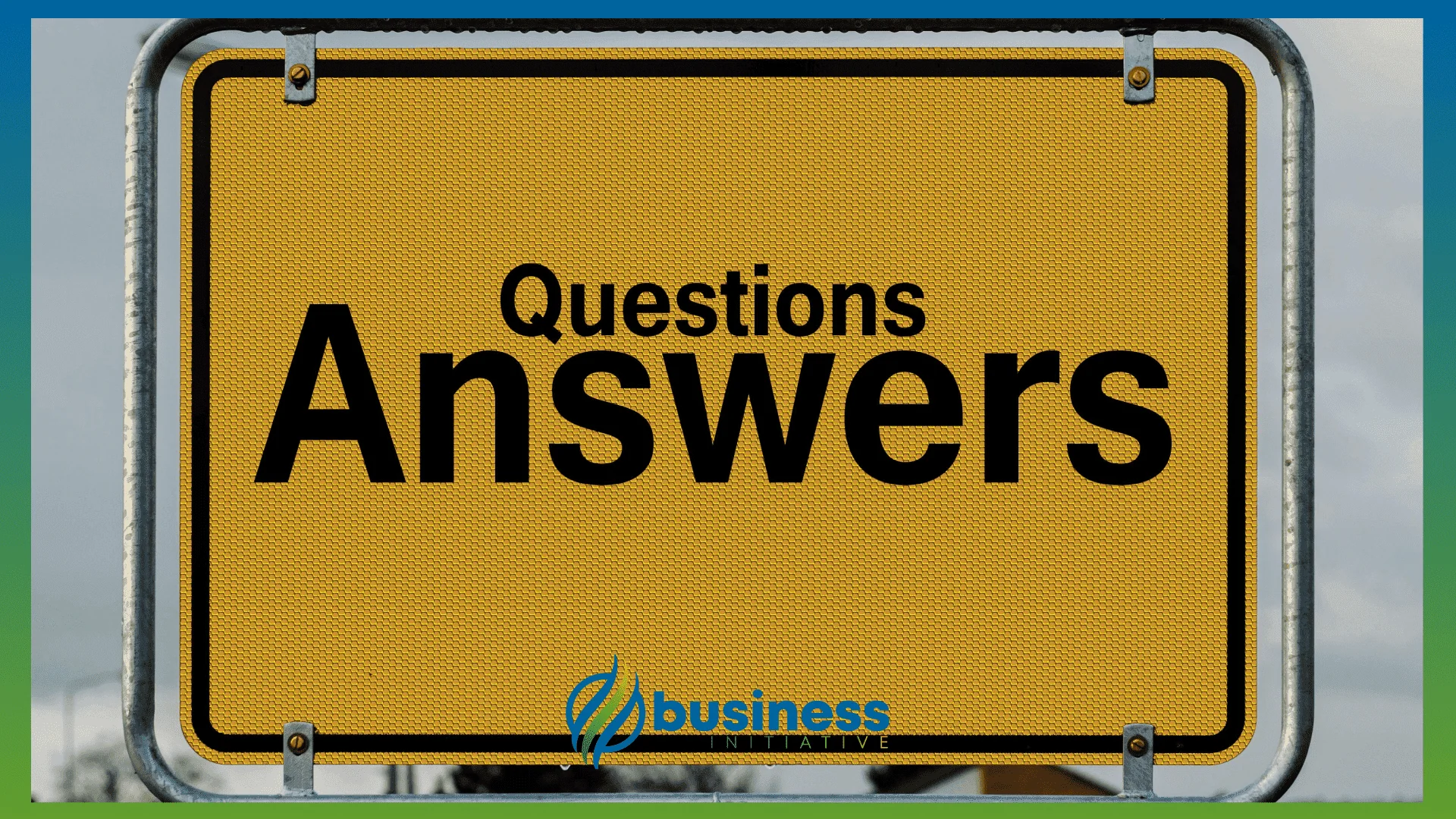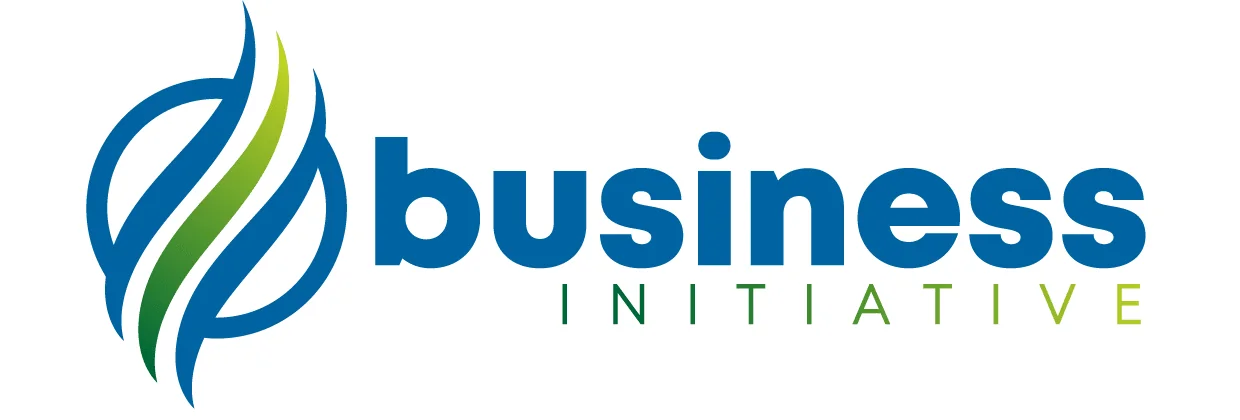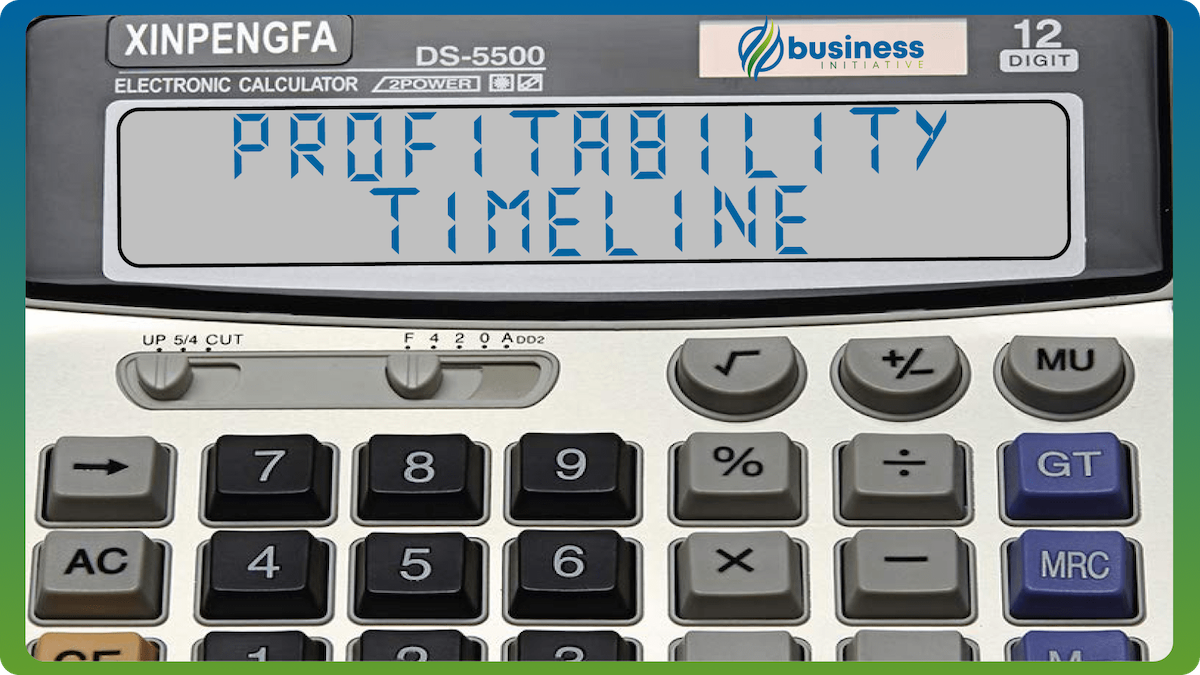Understanding your path to profitability is fundamental for strategic planning, investor relations, and sustainable business development. A clear profitability timeline helps you make informed decisions about growth investments, operational scaling, and resource allocation while maintaining financial discipline throughout your journey to sustainable profits.
Whether you’re planning your first profitable quarter, preparing investor presentations, optimizing growth strategies, or managing stakeholder expectations, accurate profitability projections provide the roadmap needed to achieve sustainable financial success while balancing growth ambitions with operational efficiency.
Our comprehensive profitability timeline calculator not only projects when you’ll reach profitability but also provides strategic insights into growth optimization, milestone planning, and operational efficiency to help you accelerate your path to sustainable profits while maintaining competitive positioning.
 Table of Contents
Table of Contents
 Key Takeaways
Key Takeaways
- Project accurate profitability timeline
- Plan strategic growth investments
- Optimize operational efficiency
- Align milestones with profitability goals
- Make informed financial decisions
Quick Reference: Profitability Timeline Benchmarks
| Business Type | Typical Timeline | Key Success Factors | Common Challenges |
|---|---|---|---|
| SaaS Startup | 18-36 months | Recurring revenue, low churn | Customer acquisition costs |
| E-commerce | 6-18 months | Inventory efficiency, conversion rates | Marketing costs, seasonality |
| Service Business | 3-12 months | Utilization rates, pricing optimization | Scaling challenges, capacity limits |
| Manufacturing | 12-24 months | Production efficiency, scale economics | Capital requirements, fixed costs |
Understanding Profitability Timeline
Growth Planning
Balance growth investments with profitability goals for sustainable scaling
Milestone Alignment
Align operational milestones with profitability targets and investor expectations
Resource Optimization
Optimize resource allocation to accelerate profitability without compromising quality
Financial Planning
Plan cash flow and funding requirements based on profitability projections
Profitability timeline calculation considers:
- Current Financial Position: Revenue, expenses, and cash flow trends
- Growth Rate: Expected revenue growth and scaling patterns
- Cost Structure: Fixed vs. variable costs and scaling efficiency
- Market Dynamics: Competition, seasonality, and market conditions
How to Use This Calculator
Quick Start Guide
Enter Current Metrics
Input current monthly revenue and expenses accurately
Project Growth Rate
Estimate realistic monthly revenue growth expectations
Calculate Timeline
Get your projected timeline to reach profitability
Plan Strategy
Use insights to optimize your path to profitability
Financial Milestones
Progress to Profitability
0% of the way to break-even
Interpreting Your Results
Understanding your profitability timeline helps guide strategic decisions:
Timeline Analysis
Short Timeline (3-6 months)
- Strong unit economics and efficient operations
- Limited growth investments needed
- Focus on scaling and market expansion
- Maintain operational discipline and quality
Moderate Timeline (6-18 months)
- Healthy trajectory with balanced growth
- Opportunities for strategic investments
- Plan milestone-based improvements
- Monitor key metrics and adjust strategy
Extended Timeline (18+ months)
- Significant growth investments or challenges
- Need for strategic optimization
- Consider pivot or efficiency improvements
- Plan funding requirements carefully
No Clear Path to Profitability
- Fundamental business model issues
- Major strategic changes required
- Consider pivot, restructuring, or exit
- Seek professional strategic guidance
Key Profitability Drivers
Revenue Growth: Sustainable, predictable revenue increases Gross Margin: Healthy margins that improve with scale Operating Efficiency: Controlled expense growth relative to revenue Customer Economics: Positive unit economics and lifetime value
Profitability Acceleration Strategies
Revenue Optimization
1. Pricing Strategy Enhancement
- Implement value-based pricing models
- Test price increases with customer segments
- Create premium service tiers and upselling
- Optimize discount and promotional strategies
2. Customer Acquisition Efficiency
- Reduce customer acquisition costs through optimization
- Focus on high-value customer segments
- Improve conversion rates and sales processes
- Develop referral and advocacy programs
3. Revenue Stream Diversification
- Add complementary products or services
- Create recurring revenue components
- Develop partnership revenue opportunities
- Explore new market segments and channels
Cost Structure Optimization
1. Operational Efficiency
- Automate repetitive processes and workflows
- Optimize supply chain and vendor relationships
- Implement lean methodologies and waste reduction
- Improve resource utilization and productivity
2. Fixed Cost Management
- Negotiate better terms for rent, insurance, utilities
- Optimize technology stack and subscription services
- Consider shared services and outsourcing
- Implement performance-based compensation
3. Variable Cost Control
- Optimize cost of goods sold and materials
- Improve inventory management and turnover
- Reduce shipping and fulfillment costs
- Negotiate volume discounts with suppliers
Growth Investment Timing
1. Strategic Investment Prioritization
- Focus on highest ROI initiatives first
- Time investments with revenue milestones
- Balance growth speed with profitability
- Maintain cash flow positive operations
2. Scalable Systems Development
- Invest in technology and automation early
- Build processes that scale efficiently
- Create standard operating procedures
- Implement quality control systems
3. Team and Capacity Planning
- Hire based on revenue milestones
- Focus on revenue-generating roles first
- Implement performance management systems
- Plan for skill development and training
Milestone-Based Profitability
Financial Milestones
Revenue Milestones:
- Monthly recurring revenue targets
- Customer acquisition and retention goals
- Average revenue per customer improvements
- Market share and penetration objectives
Profitability Milestones:
- Gross profit margin targets
- Operating margin improvements
- EBITDA positive achievement
- Net profit sustainability
Cash Flow Milestones:
- Cash flow positive operations
- Working capital optimization
- Investment payback periods
- Free cash flow generation
Operational Milestones
Efficiency Metrics:
- Revenue per employee improvements
- Customer service efficiency gains
- Production or delivery optimization
- Quality and satisfaction improvements
Market Position:
- Competitive advantage development
- Brand recognition and loyalty
- Market share growth
- Customer retention improvements
Strategic Assets:
- Intellectual property development
- Partnership and alliance creation
- Technology platform advancement
- Team capability building
Investor and Stakeholder Milestones
Investor Relations:
- Regular progress reporting and updates
- Milestone achievement communication
- Strategic plan execution updates
- Risk mitigation and management
Board and Advisory:
- Strategic guidance and oversight
- Industry expertise and connections
- Performance monitoring and feedback
- Growth planning and execution
Team and Culture:
- Performance management and development
- Culture and values alignment
- Communication and transparency
- Recognition and incentive programs
Industry-Specific Considerations
Technology and SaaS Companies
Key Factors:
- Monthly recurring revenue growth
- Customer acquisition cost optimization
- Churn rate reduction and retention
- Product development and innovation
Acceleration Strategies:
- Focus on product-market fit optimization
- Implement efficient onboarding and activation
- Develop expansion revenue opportunities
- Build network effects and switching costs
E-commerce and Retail
Key Factors:
- Conversion rate optimization
- Average order value improvements
- Customer lifetime value enhancement
- Inventory efficiency and turnover
Acceleration Strategies:
- Optimize marketing and advertising ROI
- Improve website and user experience
- Develop customer loyalty programs
- Expand product lines and categories
Service-Based Businesses
Key Factors:
- Utilization rate optimization
- Pricing and value proposition enhancement
- Client retention and satisfaction
- Service delivery efficiency
Acceleration Strategies:
- Develop recurring service offerings
- Implement value-based pricing models
- Build long-term client relationships
- Create scalable service delivery processes
Manufacturing Companies
Key Factors:
- Production efficiency and quality
- Raw material cost management
- Capacity utilization optimization
- Distribution and logistics efficiency
Acceleration Strategies:
- Implement lean manufacturing principles
- Optimize supply chain relationships
- Focus on high-margin product lines
- Develop direct-to-customer channels
Advanced Profitability Planning
Scenario Modeling
Best Case Scenario:
- Accelerated revenue growth (30-50% above base)
- Improved operational efficiency gains
- Successful new product or market launches
- Favorable market and competitive conditions
Base Case Scenario:
- Conservative revenue and expense projections
- Current trends and patterns continuing
- Normal market and competitive environment
- Planned initiatives proceeding as expected
Worst Case Scenario:
- Revenue decline or stagnation
- Increased competition or market challenges
- Operational difficulties or setbacks
- Economic downturn or industry disruption
Sensitivity Analysis
Revenue Sensitivity:
- Impact of 10%, 20%, 30% revenue changes
- Customer acquisition and retention variations
- Pricing and market condition changes
- New product or service performance
Cost Sensitivity:
- Fixed cost increase or decrease impacts
- Variable cost fluctuation effects
- Inflation and supplier price changes
- Investment timing and magnitude variations
Market Sensitivity:
- Competitive pressure and response
- Economic and industry condition changes
- Regulatory and technology disruptions
- Customer behavior and preference shifts
Need help accelerating your path to profitability and optimizing your business model? Schedule a consultation with our profitability experts at Business Initiative.
Stay informed about business strategies and tools by following us on X (Twitter) and subscribing to our newsletter.
FAQs - Frequently Asked Questions About Profitability Timeline

How accurate are profitability timeline projections?
Profitability timelines provide directional guidance rather than precise predictions. Accuracy depends on assumption quality and regular updates with actual data. Focus on trends and ranges rather than exact dates.
Learn More...
Timeline accuracy varies significantly based on business stage, market maturity, and data quality. Early-stage companies with limited operating history typically see greater variance, while established businesses with consistent patterns achieve higher accuracy. Use conservative assumptions and model multiple scenarios to account for uncertainty.
External factors like market conditions, competitive dynamics, and economic environment significantly impact accuracy. Model different scenarios (best case, base case, worst case) to understand potential ranges and prepare for various outcomes. Regular updates with actual performance data improve projection accuracy over time.
Focus on directional trends and milestone achievement rather than precise timing. Track progress toward profitability through leading indicators like unit economics improvement, customer acquisition efficiency, and operational leverage gains. Adjust strategies based on actual performance versus projections.
What should I do if my profitability timeline is longer than expected?
Extended timelines indicate optimization opportunities. Focus on revenue acceleration through pricing improvements and customer acquisition efficiency, while optimizing costs through operational improvements and strategic expense management.
Learn More...
Revenue acceleration often provides faster profitability improvement than cost reduction alone. Analyze pricing strategy, customer acquisition channels, sales conversion rates, and customer lifetime value opportunities. Small improvements in unit economics can significantly accelerate profitability timelines.
Operational efficiency improvements compound over time and create sustainable competitive advantages. Automate repetitive processes, optimize vendor relationships, eliminate redundancies, and improve resource allocation. These changes often improve both profitability timeline and long-term business sustainability.
Strategic reassessment may be necessary for significantly extended timelines. Evaluate market positioning, competitive advantages, business model viability, and resource allocation priorities. Consider strategic partnerships, product pivots, or market focus adjustments if fundamental challenges exist.
Should I prioritize revenue growth or cost reduction for faster profitability?
Balance both approaches based on your business stage and situation. Early-stage companies typically benefit more from revenue growth and market validation, while mature companies often see faster results from cost optimization.
Learn More...
Early-stage companies should prioritize revenue growth and market validation over premature cost optimization. Focus on proving product-market fit, understanding customer needs, and building scalable revenue streams. Excessive cost-cutting can inhibit growth and market learning opportunities.
Growth-stage companies benefit from balanced approaches: revenue optimization through pricing and customer acquisition efficiency, combined with operational improvements that support scaling. Invest in systems and processes that enable sustainable growth while optimizing unit economics.
Mature companies often achieve faster profitability improvements through cost optimization and operational efficiency. Focus on eliminating waste, optimizing processes, and improving resource allocation. Mature markets may limit revenue growth opportunities, making cost management more impactful.
How do I account for seasonal variations in profitability projections?
Model seasonal patterns separately for revenue and expenses, calculate profitability on both monthly and annual bases, and plan for seasonal cash flow variations with reserves during peak periods.
Learn More...
Detailed seasonal modeling requires historical data analysis and market pattern understanding. Track monthly revenue and expense patterns over multiple years, identify seasonal drivers, and project forward based on business growth and market changes. Account for both predictable seasonal variations and growth trajectory impacts.
Cash flow management becomes critical for seasonal businesses: build reserves during profitable periods, plan for low-season cash needs, and consider seasonal financing options. Model working capital requirements throughout seasonal cycles and maintain adequate buffer for unexpected variations.
Strategic seasonal optimization can improve overall profitability: implement seasonal pricing strategies, adjust marketing spend timing, optimize inventory and staffing levels, and develop complementary revenue streams for off-seasons. Some businesses can achieve year-round profitability through strategic seasonal management.
What role does competition play in profitability timeline planning?
Competition affects pricing power, customer acquisition costs, and market share growth. Monitor competitive actions, focus on differentiation and value creation, and consider competitive response scenarios in timeline planning.
Learn More...
Competitive intensity directly impacts key profitability drivers: pricing pressure affects revenue potential, competition for customers increases acquisition costs, and market saturation limits growth opportunities. Model competitive scenarios and their impact on timeline projections.
Differentiation strategies help maintain pricing power and reduce competitive pressure: develop unique value propositions, build customer loyalty, create switching costs, and establish competitive moats. Strong differentiation often enables premium pricing and faster profitability achievement.
Competitive monitoring and response planning prevent timeline disruption: track competitor pricing, product developments, and market strategies. Develop defensive and offensive strategies for various competitive scenarios, and maintain flexibility to adjust timeline assumptions based on market dynamics.
How often should I update my profitability timeline projections?
Update monthly for fast-growing businesses and quarterly for stable operations. Revise immediately after major changes in business model, market conditions, or competitive landscape using rolling forecasts for accuracy.
Learn More...
Update frequency should match business velocity and volatility: high-growth companies with rapid changes need monthly updates, while stable businesses can use quarterly reviews. Critical is maintaining current projections that reflect actual performance and market conditions.
Trigger immediate updates for significant changes: new product launches, major customer wins or losses, competitive disruptions, market condition changes, or strategic pivots. These events can significantly impact timeline assumptions and require strategic adjustments.
Rolling forecast methodology maintains projection accuracy: continuously update 12-18 month forward projections, incorporate actual performance data, adjust assumptions based on trends, and extend forecast horizon as time progresses. This approach provides better planning visibility than static annual projections.
What if my projections show I'll never reach profitability?
This indicates fundamental business model issues requiring strategic changes. Evaluate pricing strategy, cost structure, market positioning, and consider pivot opportunities, strategic partnerships, or business model innovations.
Learn More...
Fundamental business model analysis becomes necessary: examine unit economics, market size and growth potential, competitive positioning, value proposition strength, and scalability factors. Identify specific barriers preventing profitability and evaluate potential solutions or alternatives.
Strategic options for non-viable models include: business model pivots, market repositioning, partnership opportunities, product line adjustments, or target customer changes. Sometimes radical changes are necessary to achieve viable economics, requiring difficult decisions about direction and focus.
Professional guidance often provides valuable perspective: experienced advisors can identify blind spots, suggest strategic alternatives, provide market insights, and help evaluate restructuring options. External perspective often reveals opportunities or challenges that internal teams miss.
How do I effectively communicate profitability timeline to investors?
Present realistic timelines with clear assumptions and milestone-based progress tracking. Show multiple scenarios, explain key drivers and risks, and demonstrate understanding of unit economics and sustainable profitability paths.
Learn More...
Investor communication requires transparency and credibility: present realistic assumptions based on data and market analysis, acknowledge uncertainties and risks, show multiple scenarios with probability assessments, and explain the logic behind projections. Avoid overly optimistic projections that damage credibility.
Milestone-based reporting demonstrates progress and accountability: define specific, measurable milestones leading to profitability, track progress against timeline, explain variances and corrective actions, and show how achievements build toward sustainable profitability. This approach builds investor confidence in management execution.
Regular updates maintain investor engagement and trust: provide consistent reporting on timeline progress, proactively communicate challenges and solutions, celebrate milestone achievements, and request input on strategic decisions. Transparent communication often leads to more supportive investor relationships.


